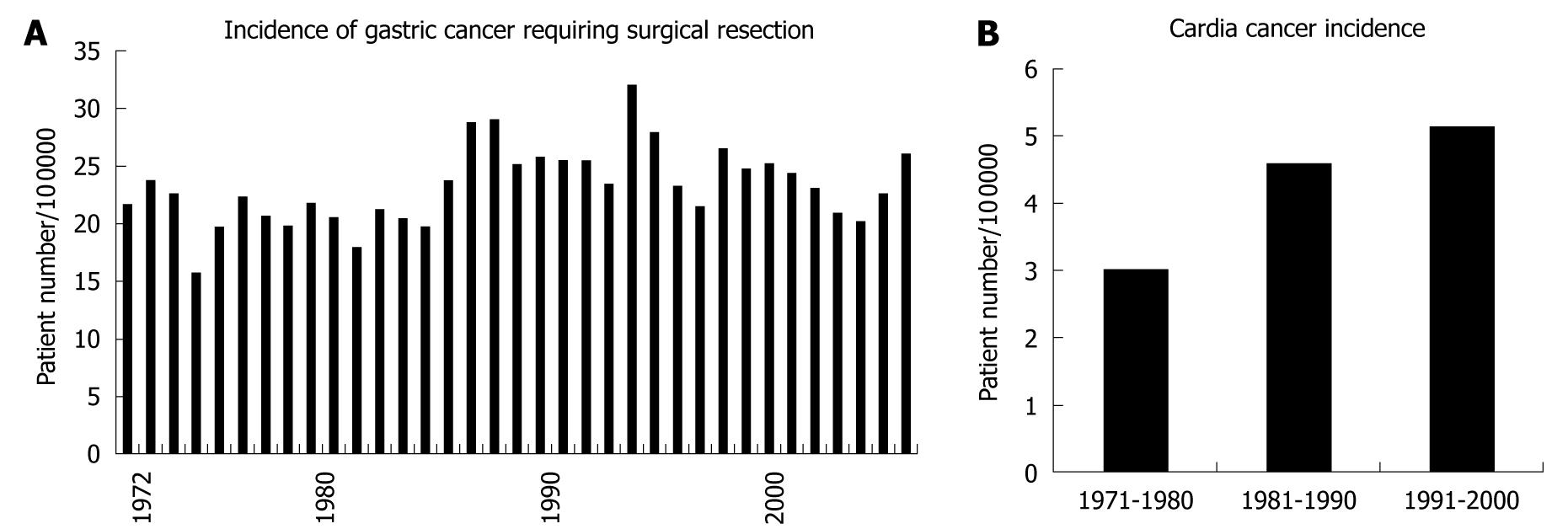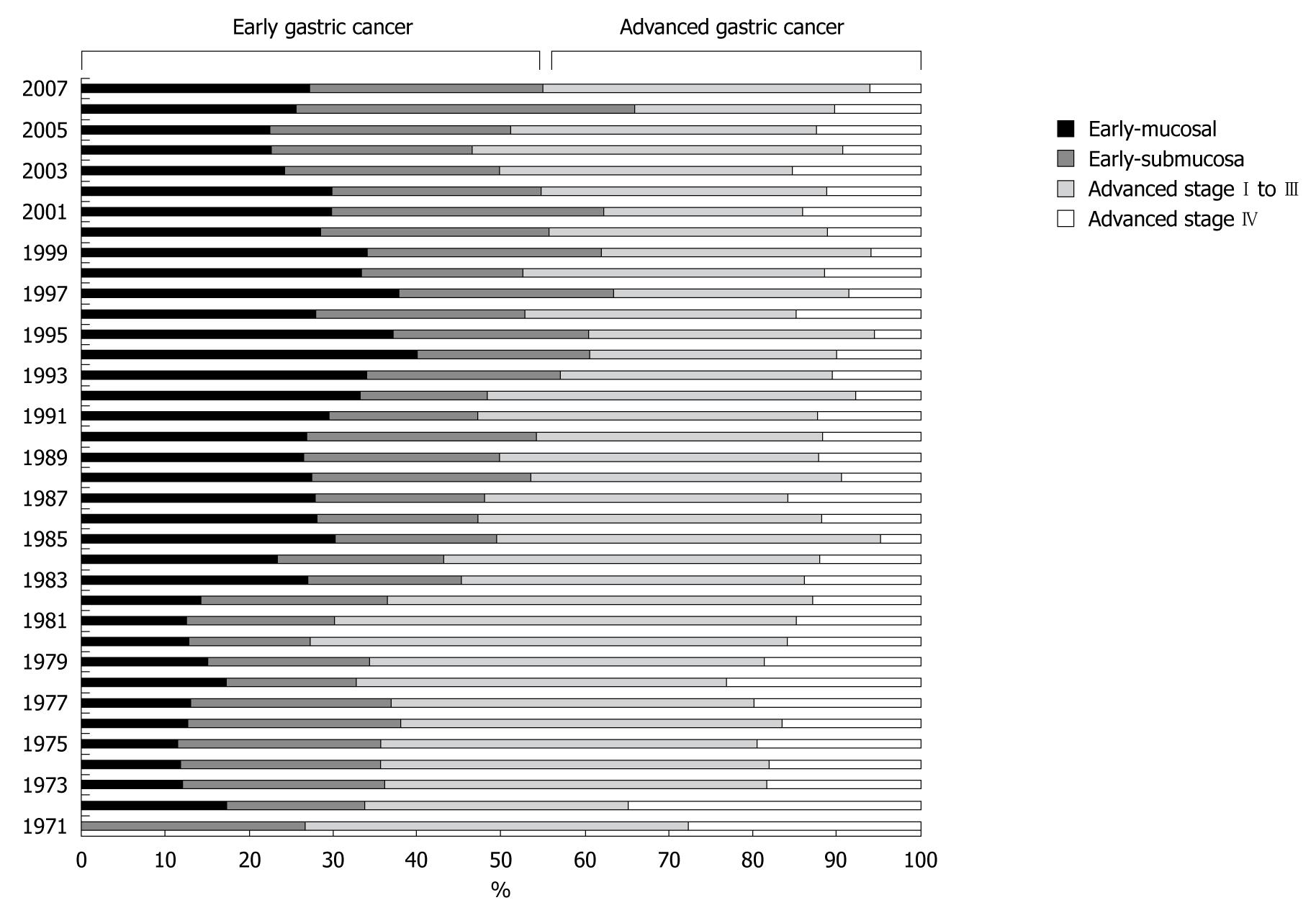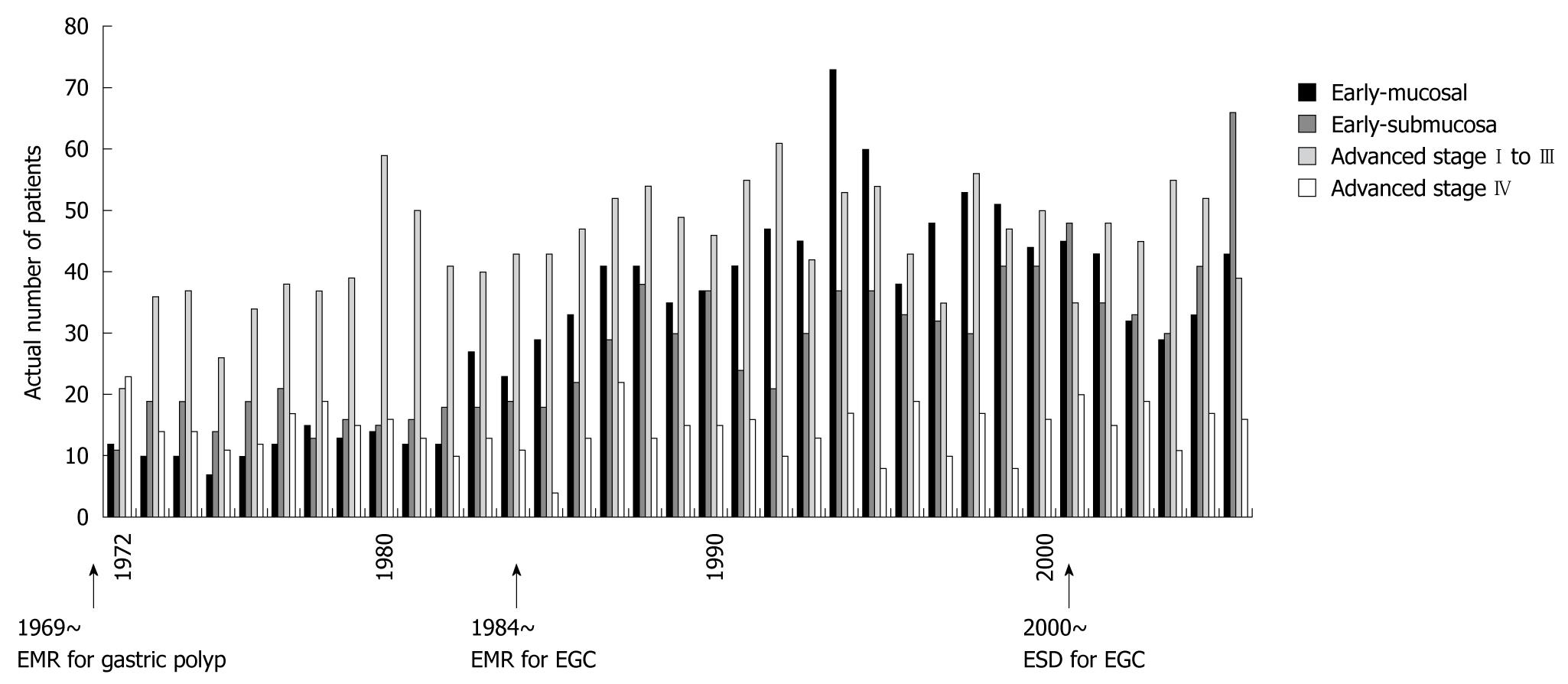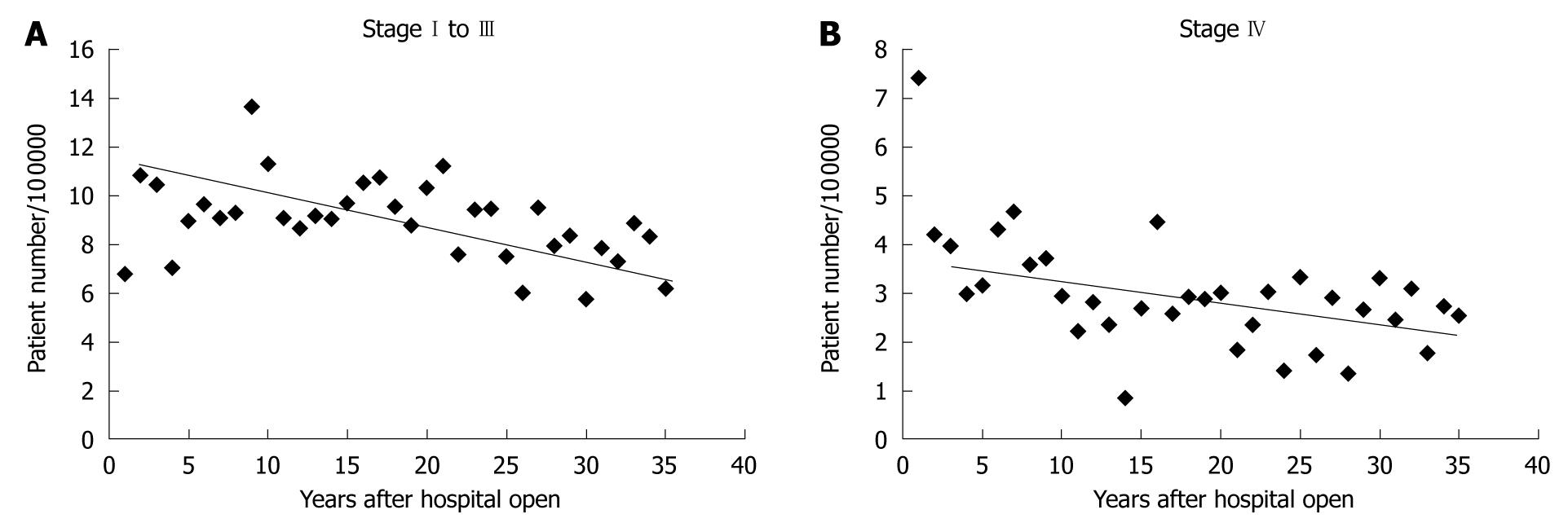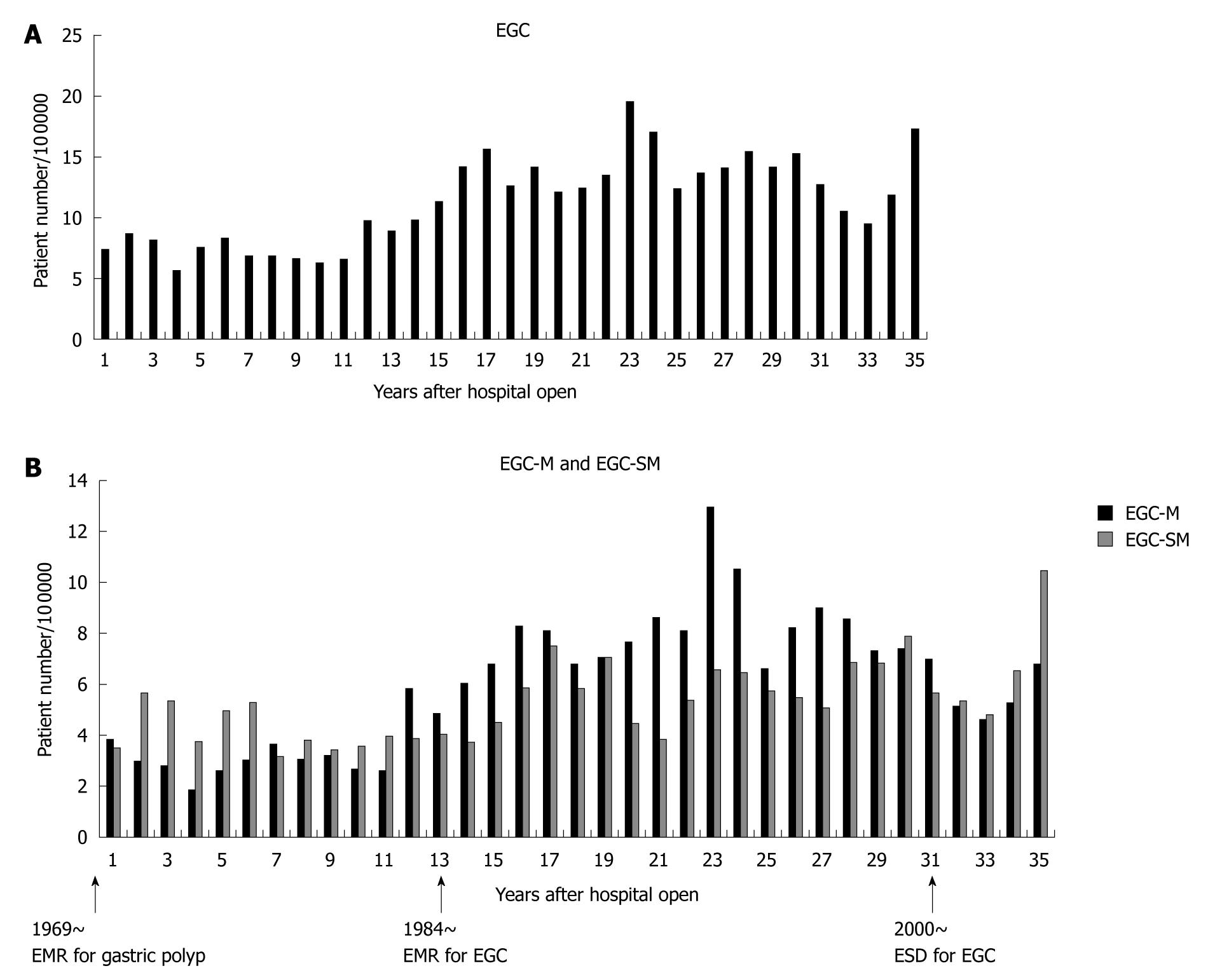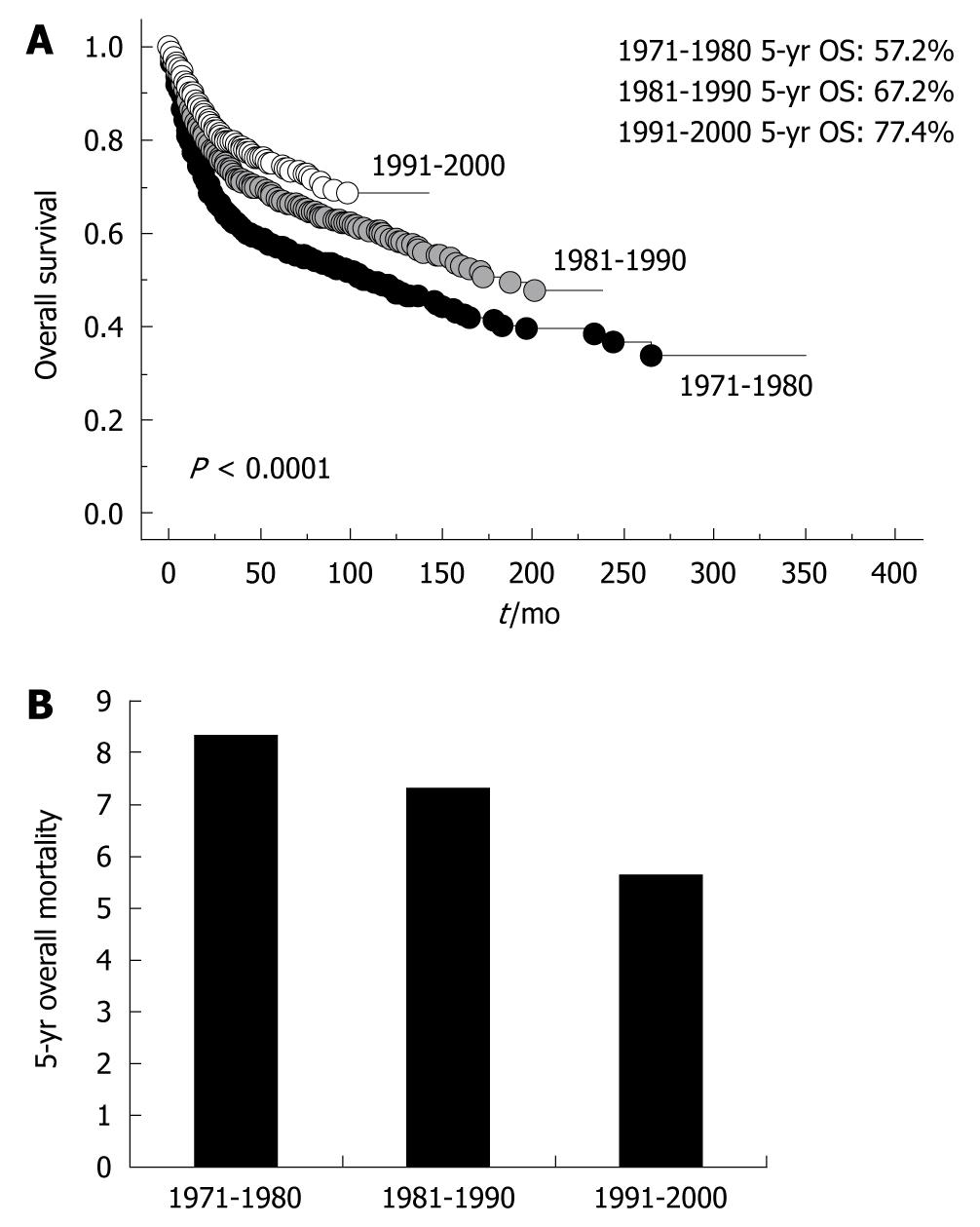Copyright
©2011 Baishideng Publishing Group Co.
World J Gastroenterol. Aug 7, 2011; 17(29): 3390-3397
Published online Aug 7, 2011. doi: 10.3748/wjg.v17.i29.3390
Published online Aug 7, 2011. doi: 10.3748/wjg.v17.i29.3390
Figure 1 Trends in gastric cancer patients in Kitasato University Hospital.
A: Trend in the numbers of patients requiring surgery, according to 3 histology categories, namely intestinal, mixed, and diffuse type; B: Trend in the proportion of intestinal type advanced gastric cancer (AGC) of stages I to III. Note that the proportion of intestinal type AGC did not decline during the time period (the final time period was 7 years only).
Figure 2 Incidence of gastric cancer treated in Kitasato University Hospital, according to the population of Sagamihara city.
A: Incidence is shown between 1972 and 2006, because full annual data for 1971 and 2007 was not available. The incidence of gastric cancer requiring surgery did not decline; B: Incidence of gastric cardia cancer has been increasing until recently. Incidence is per 100 000 population.
Figure 3 Proportion of early gastric cancer and advanced gastric cancer.
Early gastric cancer (EGC) was further subdivided into mucosal EGC (Early-mucosal ) and submucosal EGC (Early-submucosa), while advanced gastric cancer was subdivided into stage I-III and stage IV. Note that the proportion of EGC increased over time.
Figure 4 Trend in the number of patients according to the 4 gastric cancer categories in Kitasato University Hospital.
The initial year of the critical events in endoscopic resection in Japan is designated by arrows. EMR: Endoscopic mucosal resection; ESD: Endoscopic submucosal dissection; EGC (Early-mucosal ).
Figure 5 Incidence of advanced gastric cancer treated in Kitasato University Hospital per 100 000 population of Sagamihara city.
A: Incidence of advanced gastric cancer (AGC) stage I to III the observed 35 years between 1972 (corresponding to 1) and 2006 (corresponding to 35). Note that the incidence of AGC stage I to III declined during the time period; B: Incidence of AGC stage IV during the same 35 years.
Figure 6 Incidence of early gastric cancer treated in Kitasato University Hospital per 100 000 population in Sagamihara city.
A: Incidence of early gastric cancer (EGC) in the 35 years between 1972 and 2006. Note that the incidence of EGC increased during the time period; B: Incidence of EGC-M and EGC-SM during the observed 35 years. The initial year of the critical events in endoscopic resection in Japan is designated by arrows. EMR: Endoscopic mucosal resection; ESD: Endoscopic submucosal dissection; EGC-M: Early-Mucosa; EGC-SM: Early-Submucosa.
Figure 7 Clinical outcome of gastric cancer requiring surgery in the Kitasato University Hospital.
A: Overall survival (OS) of gastric cancer requiring surgery shown according to time period (1971-1980, 1981-1990, 1991-2000). Five-year OS was 57.2%, 67.2%, and 77.4% according to time period, and has remarkably improved; B: Mortality of gastric cancer requiring surgery shown according to time period (1971-1980, 1981-1990, 1991-2000), which is consistent with (A).
- Citation: Yamashita K, Sakuramoto S, Nemoto M, Shibata T, Mieno H, Katada N, Kikuchi S, Watanabe M. Trend in gastric cancer: 35 years of surgical experience in Japan. World J Gastroenterol 2011; 17(29): 3390-3397
- URL: https://www.wjgnet.com/1007-9327/full/v17/i29/3390.htm
- DOI: https://dx.doi.org/10.3748/wjg.v17.i29.3390














